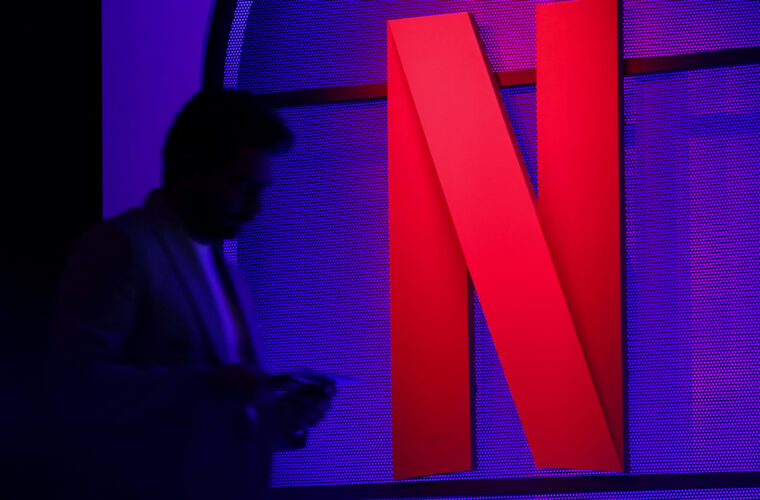Netflix users are dropping, prices are going up, and shared passwords are weighing on the bottom line. Here are the remedies to get back to smiling (but it won’t be easy)
Spy lit and red alert triggered for Netflix, which has recorded a decline in subscribers for the first time since the launch of the on-demand video streaming service in 2008. However, with its 221.6 million customers (certified as of March 31, 2022), the company led by Reed Hastings remains at the top of the industry thanks to the nearly $30 billion in revenues coming in 2021. The turnaround has made noise and opened doubts about the future. But why, with a dynamic catalogue constantly updated and with a wide offer of TV series and docs related to individual territories and cultures (to attract and retain even that niche of fans), does Netflix takes steps back and even lose users?
The obligatory premise is that in the last few months, a series of causes have mixed, producing a remarkable and partly unexpected effect that has affected the accounts of the Californian company. First of all, there were 200,000 fewer customers in the first quarter of the year than in the past, and the consequent fears of shareholders have brought the stock down on Wall Street, marking a 35% drop. The historic setback came after the company missed expectations for subscriber growth, with new default estimates and an announced decline of approximately 2 million subscribers in the quarter between April and June 2022 alone.

The reasons for the braking
It’s no coincidence that during the 2020-2021 period, Netflix and other players in the video streaming market hit records for subscribers (36 million more annual subscriptions than in the previous twelve months for Netflix alone), consumption, and revenue, knowing that that surge of interest would end in the following months anyway. Driving the decline in subscribers was, first and foremost, the end of the lockdown. With the widespread Covid-19 vaccinations, people gradually returned to their usual activities and spent less time home. If the unexpected Russian invasion in Ukraine forced the company to suspend operations and lose the 700,000 subscribers scattered from Moscow to Siberia, the 600,000 drops recorded in North America are worrying. Also, with Europe, the Middle East, and Africa in slight contraction (-300,000 users overall in the first quarter), the only positive news comes from Asia, with over 1 million more customers than in the past.

Another crucial factor in the declining numbers is the increased investments and proposals of the main competitors, namely Amazon Prime Video, Disney+, Apple TV+, and HBO. They are mainly rooted in the United States, but they are conquering spaces in the rest of the world, exploiting several advantages. Amazon offers the streaming video service and 24-48 hour shipping, and many other benefits within the Prime subscription; Disney+ continues to increase its subscribers’ thanks to investments in sports. At the same time, the newest HBO Max (owned by Warner Bros Discovery) grinds subscriptions and, including HBO, counts on 77 million subscribers.
What has also crumbled some of the customers’ trust in Netflix has been its pricing policy, with three increases in three years in the United States and Canada (the Premium subscription costs $19.99 per month, while the Standard version requires $15.49 each month). Access to Disney+ starts at $7.99 while adding the Hulu and ESPN+ catalogs comes to $20 monthly.
If the $17 billion invested in 2021 to produce original series is not a problem for Netflix, but rather the figure will continue to rise in the future to increase the proposal and enrich a catalog challenged by the multiplication of alternatives, a severe problem that the company must remedy is the sharing of passwords. An illegal practice on which the company has turned a blind eye for years in favor of the spread of the service, which weighs on the performance of the accounts and the expectations of shareholders in times of crisis. According to the company based in Los Gatos (a small town about 80 km from San Francisco), there are about 100 million users of content that take advantage of the subscription of friends, relatives, and even strangers, thanks to online services created precisely to facilitate the sharing of expenses for subscriptions to various digital services.

New features to experience – Netflix
To remedy user misconduct, Netflix is experimenting with new features to add one or more users outside the family circle. You pay a flat fee based on the number of people you add: the first tests are active in Chile, Peru, and Costa Rica, with the possibility of integrating a maximum of two users to a single account for about $2.5-3 per month, in addition to the subscription price. The other way forward is the arrival of advertising, as already done by competitors.
A choice always rejected by Hastings but coming back to the forefront to launch affordable subscriptions, potentially catering to those who want to watch Netflix content but can’t afford or aren’t willing to pay the monthly fee for one of the options available so far. “The change aims to satisfy consumer choices,” said in this regard the Ceo of Netflix, ready to vary formulas and expand the business (as evidenced by the opening to video games) at the cost of keeping the flag high and remaining at the helm of a market that needs novelty to continue to ensure profits of a certain level.



